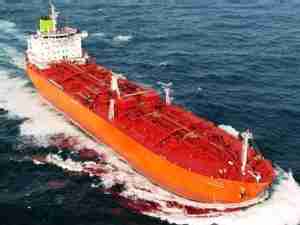By George Lauriat, AJOT
There is a and advertisement on television where a famous actor touting a stock brokerage firm in baronial tones says the company 'earns money the old fashion way.' Replace the three-piece-suit with a longshoreman and few shore cranes moving boxes of fruit, newsprint, plywood, maybe steel coils or cocoa and you have a pretty fair idea of what it really takes to 'earn money the old fashion way.'
'What I like about the business is that we touch and feel the cargo,' Roger Youngren, vice president of DSR said when asked about wide-range of cargoes handled by the company. Youngren, a graduate of Kings Point in the 1970s and a veteran of the defunct US Lines, added 'every day that you come to work, the job (cargo) challenges your gear, your equipment and your people differently.'
The marine terminal operator is the rivers' largest stakeholder and the diversity of operations is reflected at each terminal. DRS, jointly owned by SSA Marine, a Seattle based terminal operator (a subsidiary of the Carrix Group) and Ports America. Ports America is the successor terminal operator to P&O Ports North America (which itself had bought ITO), was sold by Dubai Ports World to insurance giant AIG in December of last year.
Although the sale soaked up a lot of ink in trade publications and even hit mainstream media, in reality it had very little impact on the day-to-day operations at the facilities.
The DRS operations on the Delaware River vary considerably facility to facility. For example, DRS operates the Tioga Marine Terminal in Philadelphia under the auspices of the PRPA (Philadelphia Regional Port Authority). The 96-acre terminal is best known for handling Chilean fruit (CSVA is the fourth year of an arrangement for a six month sublease), principally grapes and Clementine oranges from Spain. To accommodate the perishables, the facility has a 150,000 sq/ft of cold storage, along with heated facilities and 180 reefer plugs. Tioga also handles newsprint, lumber and steel overflow from the cross-river Camden facilities. Annually, the tonnage regularly tops 300,000 tons.
The Beckett Street Terminal in Camden New Jersey is under the South Jersey Port Corporation, and covers 125 acres. The facility handles steel and related products, cocoa, plywood and fruit.
Youngren explained that 'the cocoa is from West Africa and Malaysia and is unloaded and shipped across the street to a special cocoa handling facility ' we are the second largest cocoa on the East Coast.' The plywood is generally from Indonesia and tops 400,000 tons, making South Jersey the unofficial plywood port leader. Another related lumber product that crossed the pier was wood moldings from Chile destined for Home Depot stores. Pier 5 handles the Del Monte fruit ships. The facility handles two calls per day during the busy winter season. Most of the fruit is from Central and South America. The facility loads paper and Kraft liner board for the return leg. Overall the terminal handles around 550,000 tons of fruit and in excess of 1.4 million tons annually.
The operation in Wilmington Delaware is a little different. 'We are a pure stevedore in Wilmington,' Youngren said. The company handles ro/ro auto operations, unloads steel, lumber gypsum and other neo-bulks and bulk commodities. The terminal is some 350 acres in size with seven berths. What makes Wilmington so unique is that it has both the largest dedicated auto ro-ro berth and the largest dockside cold storage/controlled atmosphere facility. Overall the Wilmington facility handles around a half a million tons of cargo and another 40,000 plus vehicles annually.
To put DRS's Delaware River operations into perspective, collectively the operations add up to over 2.2 million tons of cargo and 40,










